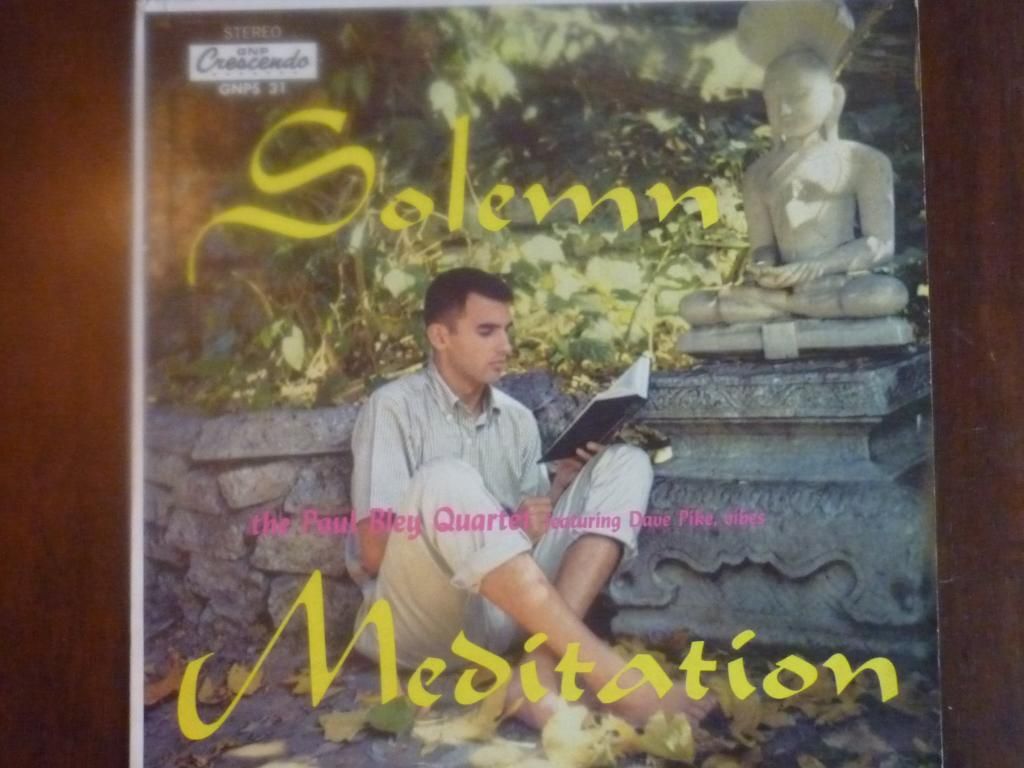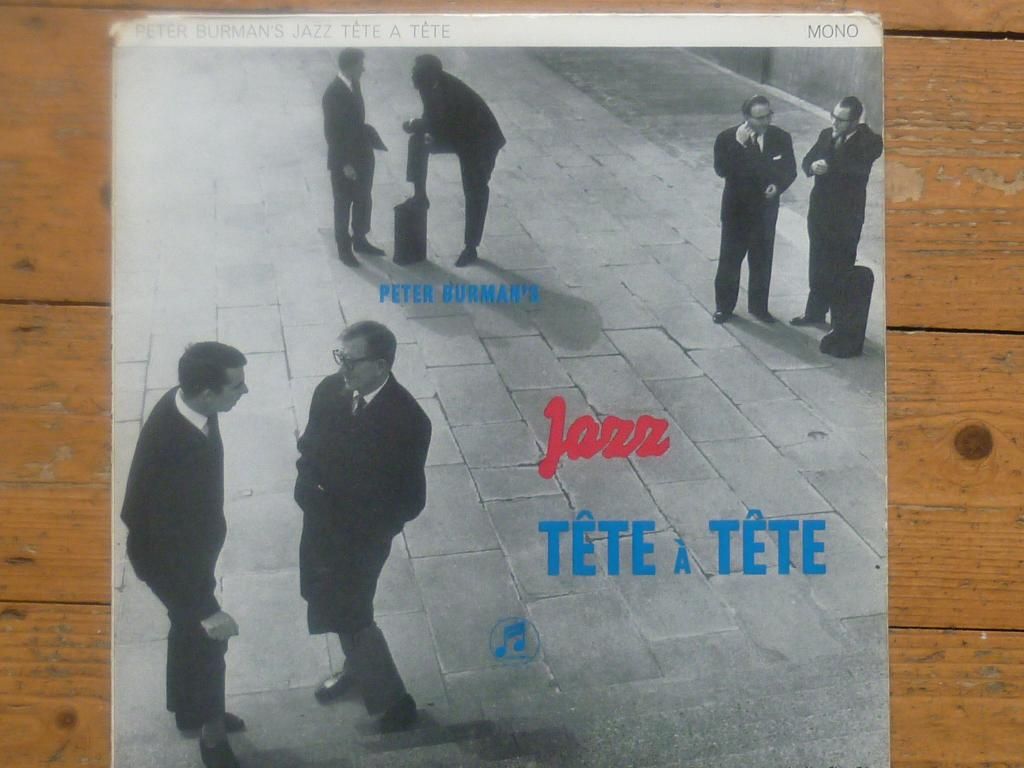Excuse this slightly rambling post. I;m trying to work out some ideas on the fly so I hope some, at least, makes sense!
Don't expect Paul Bley's Solemn Mediation to be as exotic as the cover might make out. There is Paul, looking very serious and preppy with his buzz cut and button-down shirt but still without shoes, reading a book at the foot of the Buddha. What is he reading? Is it a religious text, is he seeking enlightenment, is he in some way meditating? Meditation, Buddha, a quest for knowledge, possibly a jungle behind him, all of these things point to the record being concerned with Eastern spirituality. Is this record going to be in any way exotic I hear you ask.
Solemn Meditation was released in 1958, the same year as another pianist called Martin Denny released Exotica. The covers of both records evoke and unnamed 'other' place with east Asian overtones. The titles of the Bley compositions, are Drum Two and Beau Diddley with Dave Pike contributing Persian Village. Compare these to Quiet Village, Love Dance, Ami Wa Furi and Waipio on Exotica. However, the two record could not be more different despite these superficial similarities.
Denny's group and Bley's were quartets, both also including vibes, Arthur Lyman in Denny's group and Dave Pike in Bley's and neither group featured brass players.
Why am I comparing these two records you might ask? I want to draw some parallels with non-American influences in jazz and in 'pop' or in Denny's case exotica.
Of course the most obvious difference between the two records is that the music on Bley's record is much more clearly in the jazz idiom. He covers songs written by Dizzy Gillespie and Roy Eldridge as well as Porgy from Gershwin's jazz influenced musical. Meanwhile Denny relies heavily on Les Baxter who, although recording a number of records with the word jazz in the title (Jungle Jazz, African Jazz), writing for prominent swing bands in the 1940s and experimenting with rhythms and instruments from Latin America and elsewhere, is not considered to be a jazz musician.
While i grant you there is considerably less swing in Denny's record it is clearly as concerned with the nature of sounds and rhythm as Bley's. Indeed at times I can hear Dave Brubeck's experiments underneath the bird calls and percussion flourishes.
What is also missing on the Denny record are the clear references throughout Solemn Meditation to other jazz musicians and trends, most notably bop and pianists such as Bud Powell and fellow Canadian Oscar Peterson.
Strangely what I don't hear on Solemn Meditation is much experimentation. Given that Bley was, at the time of recording this record, playing with Ornette Coleman and Don Cherry and that his bassist Charlie Hadden would go on to join the Colemen group, Solemn Meditation is solidly in the bop tradition.
Now, I'm not suggesting that Exotica is more experimental than Solemn Meditation but perhaps it pointed the way for a new direction in a way that Solemn Meditation did not. Remember that both Coltrane and Yusef Lateef listened to and liked exotica records before they discovered field recordings. What they were listening for were new instruments, unusual sounds and original approaches to composition.
To be continued.........


